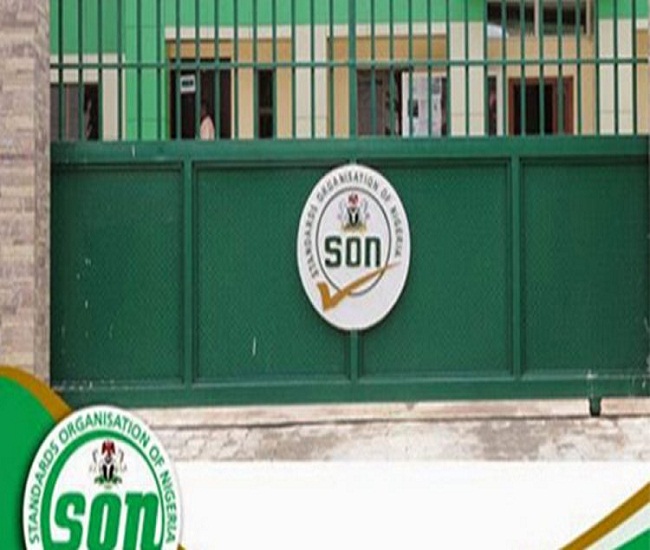According to the Economic Recovery and Growth Plan, ERGP (page 30), “The Energy sector is fundamental to development across all other sectors of the economy. The ERGP will address issues of energy from the perspective of electric power and the petroleum sector. With regard to the power value chain, efforts will be concentrated on overcoming the current challenges which relate to governance, funding, legal, regulatory, and pricing issues across the three main power segments of generation, transmission and distribution, and ensuring stricter contract and regulatory compliance. The ERGP aims to achieve 10 GW of operational capacity by 2020 and to improve the energy mix including through greater use of renewable energy. The Plan also aims to increase power generation by optimizing operational capacity, encouraging small-scale projects, and building more capacity over the long term.” (NNSS, Cl 3.3 Pp 12). As part of the efforts of the Federal Government to increase power generation for sustainable economic growth of the country, focus has been on renewable energy which involves the collection of energy from renewable sources, which are naturally replenished on a human timescale, such as sunlight, wind, rain, tides, waves, and geothermal heat and conservation of energy via the use of energy efficient appliances such as lamps, refrigerating and air-conditioning (RAC) appliance.
The Global Solar Photovoltaics (PV) market has seen a significant upsurge in terms of the cumulative installed capacity over the past decade. The total installed PV capacity in 2018 was 480 GW, which could grow to 2,840 GW globally by 2030 (International Renewable Energy Agency, 2019). However, quality assurance is vital to sustaining the interest of potential investors and other stakeholders. Therefore, many countries all over the world that are transitioning from a fossil fuel-based electricity generation system to a cleaner, more sustainable, and renewable energy sources like Photovoltaics technology are adapting or adopting internationally accepted standards for equipment and systems’ performances. The PV industry, specifically the off-grid sector as a rapidly growing industry requires standardization procedure to ensure the performance and safety of the equipment. Nigeria, Africa’s biggest economy, is also undertaking similar strategies for its PV sector.
The photovoltaic energy system (PVES) is basically composed of the Solar PV panels, Charge controllers, Inverters, and Batteries hence the development of standards for these components aimed at developing a more regulated and standardized domestic market that encourages further investments into the renewable energy and energy efficiency in Nigeria has taken place. Furthermore, with the Federal Government aiming to discourage estimated billing in our energy sector, it has become very important to see that smart energy meters are standardized. This project commenced with the collaboration of GIZ on March, 2020 and the adoption of draft standards on Solar PV Panels, Charge controllers and Batteries. These standards adopted have been approved by SON governing board around the middle of this year.
After due consultations with key stakeholders, we were able to arrive at some other standards which are remaining for the successful standardization of this sector. Some of the proposed standards were rejected during our Working Group meetings held from Tuesday 17th November, 2020 to Thursday 19th November, 2020. The standards accepted by key stakeholders to be presented for adoption at the technical committee meetings are as follows:
A. Electrical Energy Measurement and Control (Smart Energy Metering)
1. DNIS/IEC TR 62051:20XXEE Electricity metering – Glossary of terms
2. DNIS/IEC TR 62051-1-1:20XXEE Electricity metering – Data exchange for meter reading + tariff and load control – Glossary of terms – Part 1: Terms related to data exchange with metering equipment using DLMS/COSEM
3. DNIS/IEC 62053-61:20XXEE – Electricity metering equipment (A C) – Particular requirements – Part 61: Power consumption and voltage requirements
4. DNIS/IEC 62053-31:20XXEE – Electricity metering equipment (A C) – Particular requirements – Part 31: Pulse output devices for electromechanical and electronic meters (two wires only)
5. DNIS/IEC 62055-41:20XXEE Electricity metering – Payment systems – Part 41: Standard transfer specification (STS) – Application layer protocol for one-way token carrier systems
6. DNIS/IEC 62054-21:20XXEE Electricity metering (AC) – Tariff and load control – Part 21: Particular requirements for time switches
7. DNIS/IEC 62052-11 20XXEE Electricity metering equipment – General requirements + tests and test conditions – Part 11: Metering equipment
8. DNIS/IEC 62053-11:20XXEE Electricity metering equipment (a.c.) – Particular requirements – Part 11: Electromechanical meters for active energy (classes 0 + 5 + 1and 2)
9. DNIS/IEC 62053-21:20XXEE Electricity metering equipment – Particular requirements – Part 21: Static meters for AC active energy (classes 0 + 5 + 1 and 2)
10. DNIS/IEC 62056-5-3:20XXEE Electricity metering data exchange – The DLMS/COSEM suite – Part 5-3: DLMS/COSEM application layer
11. DNIS/IEC 62056-6-1:20XXEE Electricity metering data exchange – The DLMS/COSEM suite – Part 6-1: Object Identification System (OBIS)
12. DNIS/IEC 62056-6-2:20XXEE Electricity metering data exchange – The DLMS/COSEM suite – Part 6-2: COSEM interface classes
13. DNIS/IEC TR 62055-21:20XXEE Electricity metering – Payment systems – Part 21: Framework for standardization
14. DNIS/IEC 62055-51:20XXEE Electricity metering – Payment systems – Part 51: Standard transfer specification (STS) – Physical layer protocol for one-way numeric and magnetic card token carriers
15. DNIS/IEC 62055-52:20XXEE Electricity metering – Payment systems – Part 52: Standard transfer specification (STS) – Physical layer protocol for a twoway virtual token carrier for direct local connection
B. Inverters
1. DNIS/IEC 62894:20XXEE Photovoltaic inverters – Data sheet and name plate
2. DNIS/IEC 62109-1:20XXEE Safety of power converters for use in photovoltaic power systems – Part 1: General requirements
3. DNIS/IEC 62109-2:20XXEE Safety of power converters for use in photovoltaic power systems – Part 2: Particular requirements for inverters
4. DNIS/IEC 61683:20XXEE Photovoltaic systems – Power conditioners – Procedure for measuring efficiency
5. DNIS/IEC TR 61850-1:20XXEE Communication networks and systems for power utility automation – Part 1: Introduction and overview
6. DNIS/IEC 61850-3:20XXEE Communication networks and systems for power utility automation – Part 3: General requirements
7. DNIS/IEC TR 61850-90-6:20XXEE Communication networks and systems for power utility automation – Part 90-6: Use of IEC 61850 for Distribution Automation Systems
8. DNIS/IEC 61727:20XXEE Photovoltaic (PV) systems – Characteristics of the utility interface
9. DNIS/IEC 62116:20XXEE Utility-interconnected photovoltaic inverters – Test procedure of islanding prevention measures
10. DNIS/IEC 60364-7-712:20XXEE (R) Low voltage electrical installations – Part 7-712: Requirements for special installations or locations – Solar photovoltaic (PV) power supply systems
11. DNIS/IEC 62253:20XXEE Photovoltaic pumping systems – Design qualification and performance measurements
12. DNIS/IEC 62920:20XXEE Photovoltaic power generating systems – EMC requirements and test methods for power conversion equipment
13. DNIS/IEC 62891:20XXEE Maximum power point tracking efficiency of grid connected photovoltaic inverters
14. DNIS/IEC61000-3-3:20XXEE Electromagnetic compatibility (EMC) – Part 3-3: Limits – Limitation of voltage changes + voltage fluctuations and flicker in public low-voltage supply systems + for equipment with rated current ≤16 A per phase and not subject to conditional connection
15. DNIS/IEC61000-3-5:20XXEE Electromagnetic compatibility (EMC) – Part 3-5: Limits – Limitation of voltage fluctuations and flicker in low-voltage power supply systems for equipment with rated current greater than 75 A
16. DNIS/IEC61000-3-11:20XXEE Electromagnetic compatibility (EMC) – Part 3-11: Limits – Limitation of voltage changes + voltage fluctuations and flicker in public low-voltage supply systems – Equipment with rated current ≤ 75 A and subject to conditional connection
C. Batteries
1. DNIS/IEC 62933-1:20XXEE Electrical energy storage (EES) systems – Part 1: Vocabulary
2. DNIS/IEC 62933-2-1:20XXEE Electrical energy storage (EES) systems – Part 2-1: Unit parameters and testing methods – General specification
3. DNIS/IEC TS 62933-4-1:20XXEE Electrical energy storage (EES) systems – Part 4-1: Guidance on environmental issues – General specification
4. DNIS/IEC TS 62933-5-1:20XXEE Electrical energy storage (EES) systems – Part 5-1: Safety considerations for grid-integrated EES systems – General specification
5. IEC 62933-5-2:20XXEE Electrical energy storage (EES) systems – Part 5-2: Safety requirements for grid-integrated EES systems – Electrochemical-based systems
6. DNIS/IEC 61427-1:20XXEE Secondary Cells and Batteries for Renewable energy storage – General requirements and methods of test – Part1: Photovoltaic off-grid application
7. DNIS/IEC 61427-2:20XXEE Secondary cells and batteries for renewable energy storage – General requirements and methods of test – Part 2: On-grid applications
This makes the total number of adopted standards at the technical committee meeting to be 38. The technical committee meetings were held from Wednesday 25th November, 2020 to Friday 27th November, 2020 and all above named standards were adopted.
Source:Engr ACHEMA, Alewu Cherry Group Head, Electrical/Electronic (SON)










